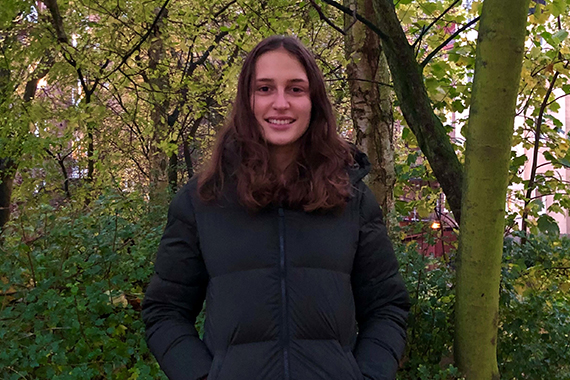Interesting with complex sustainability work
For Maja Knezevic, the freedom to run projects by yourself is the most fun part of the work integrated learning project (WIL) – which is done alongside Swedish and international classmates as a part of the master's programme. She encourages other students to take advantage of companies' confidence in their skills.
 Maja Knezevic, currently enrolled in the Master's Programme in Business Administration specialising in International Business and Marketing, talks about her work placement.
Maja Knezevic, currently enrolled in the Master's Programme in Business Administration specialising in International Business and Marketing, talks about her work placement.
Where did you do your work integrated learning project?
– I did my WIL project at the Wanås Foundation, Wanås Konst. They manage art exhibitions, including a large education and arts centre that features outdoor exhibitions and workshops for children and young people, as well as an art gallery, gift shop, and a café.
What did you do as part of your project?
– Together with three other students on the programme, I worked on developing a new environmental action plan for Wanås Konst based on the goals and activities linked to the UN's global goals for sustainable development (SDGs). We investigated how Wanås Konst implements SDGs in its daily activities by measuring employees' awareness of them.
Can you explain that a little more?
– Wanås Art already worked with sustainability to a certain extent, but wants to increase their efforts and felt that more stakeholders required more to be done. In order for the foundation to improve and intensify its sustainability activities, it is important that employees are aware of them and how they are to be implemented in their daily work. Through employee interviews, we were able to understand what the situation looked like and, at the same time, inquire from those on the frontline if there was anything that they thought could be improved.
How did you get your work placement?
– My work placement was part of the one-year Master's Programme in Business Administration specialising in International Business and Marketing. It’s designated as a course worth six higher education credits and runs during the first semester of the programme in parallel with the other courses. The course coordinators assigned me to Wanås Konst.
What was the most enlightening part of the experience?
– For me, it’s been to work with and get an insight into how a non-profit business like Wanås Konst operates. It has also been very instructive to work with sustainable development and SDGs and gain more knowledge about the area, as well as learn about how that can be implemented in a foundation's daily activities.
What was the most challenging?
– Since the work placement project was ongoing during the first semester of the master's programme in parallel with the other courses, it was a bit of a challenge to keep the project going at all times, to prioritize it and not to leave it aside.
What was the most fun?
– The most fun was the freedom given by the university and Wanås Konst to decide for ourselves about the project, choosing what should be investigated and recommending what else can be done. Wanås Konst trusted us and gave us the deciding role in the project’s future, which I think is an experience that’s an advantage for us outside the university's doors.
What was it like working with fellow students from different countries and backgrounds?
– It has been interesting to work with people who come from different countries because you learn a lot about each other's cultures and the personal journeys everyone has made. Sometimes it was challenging because we often ended up in discussions about how the work should be done or look like because we were used to different things and had different experiences. But the positive thing was that we all had different strengths that we could combine to complete our task together. We learned from each other, and it was an advantage that we had different backgrounds and, for example, came from different universities with different requirements.
Translation: Svengard & Co
